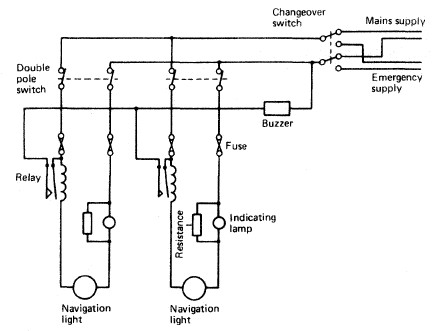Home || Diesel Engines
||Boilers||Feed Systems
||Steam Turbines ||Fuel Treatment ||Pumps ||Refrigeration ||
Navigational Light Circuit for Ships Use
The supply to the navigation lights circuit must be maintained under all
circumstances and special provisions are therefore made.
The purpose of a navigation light circuit breaker is to interrupt fault current as quickly as possible and so keep damage to other pieces of
equipment to a minimum.
The springs in a circuit breaker are to open the
contacts in the tripping operation.
To avoid any possibility of accidental open circuits the distribution
board for the navigation lights supplies no other circuit. A changeover
switch provides an alternative source of supply should the main supply
fail. If the navigation lights fail, a visual or audible indication must be
given.



